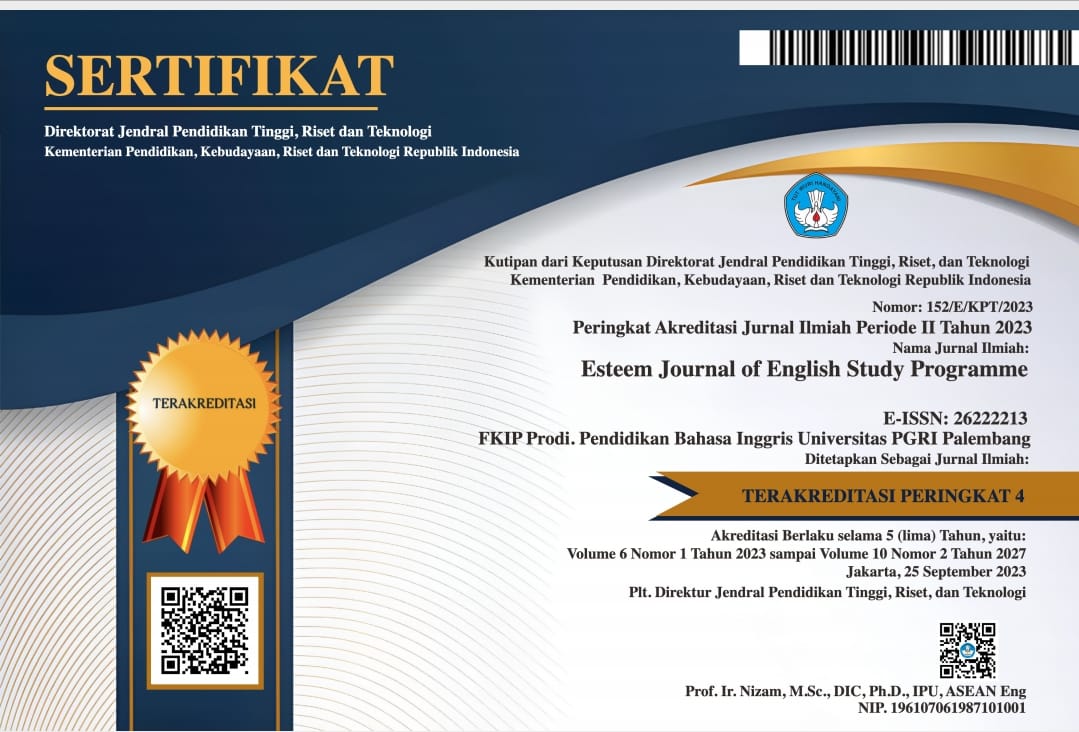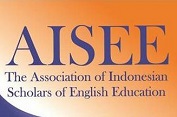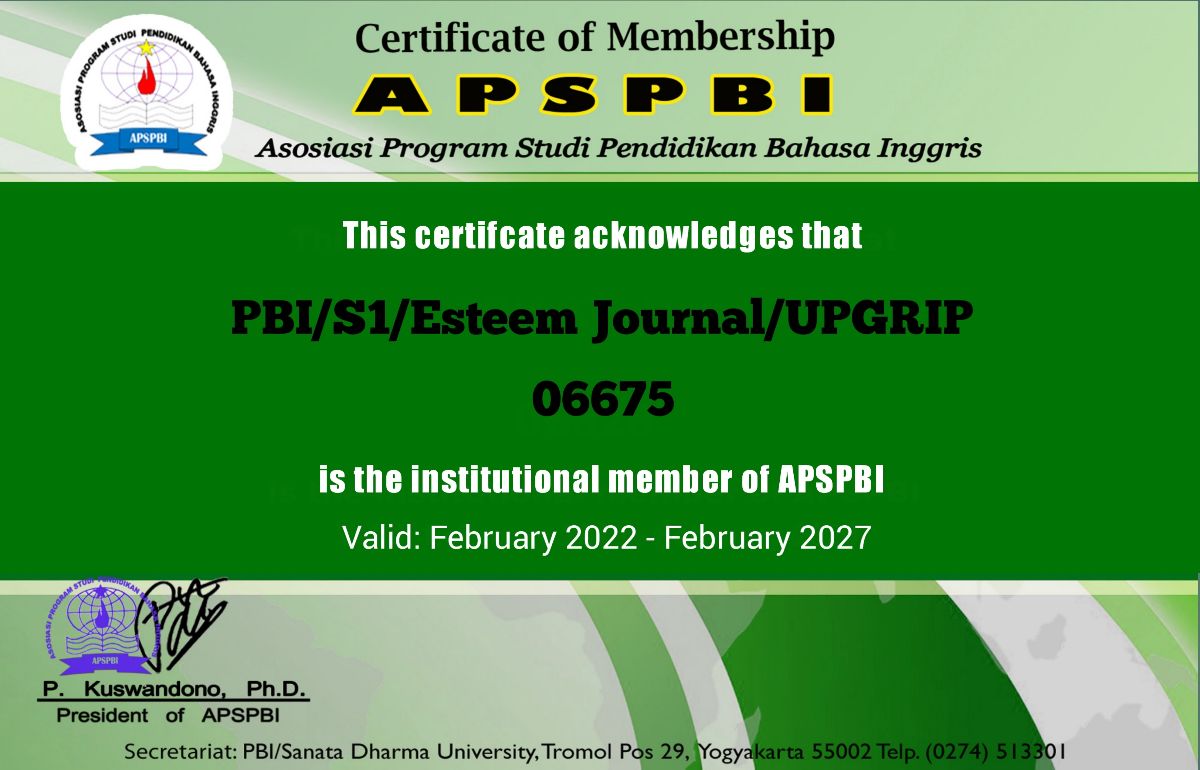THE EFFECTIVENESS OF BARRETT'S AND BLOOM'S TAXONOMY IN WRITING THE PISA MODEL READING COMPREHENSION TEST
DOI:
https://doi.org/10.31851/esteem.v8i1.18288Keywords:
Effectiveness, SOALL, Reading, PISAAbstract
International assessments such as PISA, TIMSS, and PIRLS indicate that Indonesian students perform poorly, ranking below Malaysia and far behind Singapore. This issue is compounded by internal challenges, including teacher quality. To address this, a study was conducted to evaluate the effectiveness of the Barrett and Bloom model evaluation question grid in PISA-style reading comprehension questions. The research utilized the ADDIE Research and Development model, analyzing two sets of teacher-created questions. A senior teacher developed Package A using a reading comprehension model, while a junior teacher designed Package B with a non-argumentative Bloom grid. Data analysis was conducted using a t-test in SPSS. The findings revealed that Package B outperformed Package A, with t = -11.133 and a significance level of ≤ 0.05. Additionally, most senior teacher-written questions were HOTS-based, making them more challenging and requiring critical thinking. Conversely, junior teacher-created questions were easier, with fewer HOTS elements, resulting in better test scores. Thus, the study concludes that the Barrett Grid is more effective in designing PISA-style reading comprehension questions.
References
Alifah, S. (2021). Peningkatan Kualitas Pendidikan Di Indonesia Untuk Mengejar Ketertinggalan Dari Negara Lain. CERMIN: Jurnal Penelitian, 5(1), 113. https://doi.org/10.36841/cermin_unars.v5i1.968
Anderson, L. ., & Krathwohl, D. R. (2001). A Taxonomy for Learning, Teaching, and Assessing: A Revision of Bloom’s Taxonomy of Educational Objectives. Longman Publishing.
Alpian, V. S., & Yatri, I. (2022). Analisis Kemampuan Membaca Permulaan dan Kesulitan yang Dihadapi Siswa Sekolah Dasar. Edukatif: Jurnal Ilmu Pendidikan, 4(4), 5573–5581. https://edukatif.org/index.php/edukatif/article/view/3298
Ayu Trivia Dewi., Sariyasa., Bagus Putrajaya, Ida. 2020. “Pengembangan Instrumen Berpikir Kritis dan Motivasi Belajar pada Pembelajaran Matematika Siswa kelas V SD”. Jurnal Penelitian dan Evaluasi Pendidikn Indonesia. 10, 12. https://doi.org/10.23887/jpepi.v10i2.3514
Baharuddin, H., Hanafi, M., Aswadi, A., & Kasman, R. (2021). Pengaruh Penggunaan Metode Reorganisasi Taksonomi Barrett Terhadap Kemampuan Membaca Intensif Siswa. Cakrawala Indonesia, 6(1), 21–28. https://doi.org/10.55678/jci.v6i1.299
Bloom, B. S., Englehart, M. D., Furst, E. J., Hill, W. H., & Krathwohl, D. R. (1956). Taxonomy of Educational Objectives, The Classification of Educational Goals: Handbook I, Cognitive Domain. David Mckay.
Brown, H. D. (2004). Language Assessment : Principles and Classroom Practices. Longman. https://doi.org/10.1002/9781118533406.ch15
Charmila, N., Zulkardi, Z., & Darmawijoyo, D. (2016). Pengembangan soal matematika model PISA menggunakan Konteks Jambi. Jurnal Penelitian Dan Evaluasi Pendidikan, 20(2), 198–207. https://doi.org/10.21831/pep.v20i2.7444
Creswell, J. W. (2012). Educational Research: Planning, Conducting, and Evaluating Quantitative and Qualitative Research. Pearson Education, Inc.
Downie, S., & Proulx, S. (2022). Investigating the role of gamification in public libraries’ literacy-centered youth programming. International Journal of Play, 11(4), 382–404. https://doi.org/10.1080/21594937.2022.2136637
Embretson, S., & Gorin, J. (2006). Improving Construct Validity With Cognitive Psychology Principles. Journal of Educational Measurement, 38(4), 343–368. https://doi.org/10.1111/j.1745-3984.2001.tb01131.x
Fatonah, Siti. 2013. Pengembangan Model Asesmen Otentik dalam Pembelajaran Sains SD/MI. Disertasi. Program Pascasarjana, UNY.
Fraenkel, J. R., Wallen, N. E., & Hyun, H. h. (2014). How To Design And Evaluate Research In Education (Eighth Edi). McGraw-Hill Education.
Gorin, J.S. 2006. Test Design with cognition in mind. Educational Measurement, Issues and Practice. Washington: Winter.
Hargreaves, A., Earl, L., & Schmidt, M. 2002. “Perspectives on Alternative Assessment Reform”. American Educaional Research Journal. 39 (1), https://doi.org/10.3102/00028312039001069
Hewi, La, & Muh Shaleh. 2020. “Refleksi Hasil PISA ( The Programme For International Student Assesment ): Upaya Perbaikan Bertumpu Pada Pendidikan Anak Usia Dini )”. Jurnal Golden Age. 4 (1): 30–41. https://e-journal.hamzanwadi.ac.id/index.php/jga/article/view/2018
Himawan, Riswanda, and Burhan Nurgiyantoro. 2022. “Analisis Butir Soal Latihan Penilaian Akhir Semester Ganjil Mata Pelajaran Bahasa Indonesia Kelas VIII SMPN 1 Bambanglipuro Bantul Menggunakan Program ITEMAN ( Analysis of Exercise Items for Odd Semester End of Semester Indonesian Language Subjects Class.” Kembara: Jurnal Keilmuan Bahasa, Sastra, Dan Pengajarannya 8 (1): 160–80. https://doi.org/10.22219//kembara.v8i1.20530
Himawan, Riswanda, & Pujiati S. 2022. “Developing Hots Questions : Evaluating Persuasive Speech Text Learning In Grade IX Of Junior High School.” Jurnal Gramatika: Jurnal Penelitian Pendidikan Bahasa dan Sastra Indonesia 8 (1): 50–64. https://doi.org/10.22202/jg.2022.v8i1.4810
Kaforina, M., Mulyadi, M., & Jaya, A. (2023). the Students’ Personality Based on Their Reading Attitude. Esteem Journal of English Education Study Programme, 7(1), 12–23. https://doi.org/10.31851/esteem.v7i1.12654
Leniati, Bunga, & Endang, I. 2021. “Meta Analisis Komparasi Keefektifan Model Pembelajaran Kooperatif Tipe Jigsaw Dan TSTS (Two Stay Two Stray) Terhadap Kemampuan Berpikir Kritis Pada Pembelajaran Matematika Siswa Sekolah Dasar.” Mimbar Ilmu 26 (1): 149. https://doi.org/10.23887/mi.v26i1.33359.
Martin, T. I. H. (2020). Pengembangan Instrumen Soal HOTS (High Order Thinking Skill) Pada Mata Kuliah Fisika Dasar 1. Jurnal Pendidikan Fisika, 8(1), 18–21. http://journal.uin-alauddin.ac.id/indeks.php/PendidikanFisika
Masfufah, Risma, & Ekasatya Aldila Afriansyah. 2021. “Analisis Kemampuan Literasi Matematis Siswa Melalui Soal PISA.” Mosharafa: Jurnal Pendidikan Matematika 10 (2): 291–300. https://doi.org/10.31980/mosharafa.v10i2.825.
Nisa, S. Z., Enawar, & Latifah, N. (2022). Analisis Kemampuan Membaca Pemahaman Berdasarkan Taksonomi Barret pada Siswa Kelas 4 SDN Karangharja 2. Jurnal Pendidikan Tambusai, 6(1), 7893–7899. https://jptam.org/index.php/jptam/article/view/3689
Nurjannah, R., Mulyaningsih, I., & Khuzaemah, E. (2022). Pengaruh SQ3R terhadap Keterampilan Pemahaman Teks Eksposisi Siswa Kelas VIII Membaca ( The Effect of SQ3R on the Reading Skills of Exposition Text Comprehension. Jurnal Anufa, 1(2), 201–217. https://www.anufa-ikaprobsi.org/index.php/anufa/article/view/30
Oe, H., Yamaoka, Y., & Ochiai, H. (2022). A Qualitative Assessment of Community Learning Initiatives for Environmental Awareness and Behaviour Change: Applying UNESCO Education for Sustainable Development(ESD) Framework. International Journal of Environmental Research and Public Health, 19(6). https://doi.org/10.3390/ijerph19063528
Pappas, Christine C, Kiefer, Barbara Z, Levstik Linda. 1996. An Integrated Language Perspective in the Elementary School. London: Longman
Pariñas, Neil. 2009. “Revised Taxonomy: Reframing our Understanding of Knowledge and Cognitive Process”. The Assessment handbook: Continuing education program. Volume 1, May 2009.
Pujiati. 2018. Pemahaman Membaca Bahasa Indonesia: Perbandingan Kisi-kisi Bloom, Barrett, dan Weir dalam Penyusunan Tes Pemahaman Membaca Bahasa Indonesia: Suatu Studi dalam Rangka Pengembangan Model Peramalan Kualitas Soal. Yogyakarta: Penerbit Bangun Bangsa.
Rahmi, M. M., & Erlinda, R. (2014). Teachers’ Role in Building Students’ Character Through English Language Teaching Classroom. Proceeding of the Third International Seminar on Languages and Arts, 20, 320–327.
Rokhyati, U. (2024). Between Knowledge and Implementation : Assessment Literacy of Language Lecturers. 10(06), 98–102.
UNESCO. (2002). Learning to Be: The World of Education Today and Tomorrow. UNESCO Publishing.
Roid, G.H. & Haladyna, Th.M. 1982. A Technology for Test-Item Writing. Orlando: Academic Press, Inc
Widana, I. W. (2020). Pengaruh Pemahaman Konsep Asemen HOTS terhadap Kemampuan Guru Matematika SMA/SMK Menyusun Soal HOTS. Jurnal Emasains: Jurnal Edukasi Matematika Dan Sains, 9(1), 66–75. https://ojs.ikippgribali.ac.id/index.php/emasains/article/view/618
Zabadi, Fairul. 2013. “Bahasa Indonesia dalam Kurikulum 2013: Implikasi metodologis pembelajaran bahasa berbasis teks” Makalah. Badan Pengembangan dan Pembinaan Bahasa, Kemendikbud.
Downloads
Published
Issue
Section
License
Copyright (c) 2025 Pujiati Suyata, Roni Sulistiyono, Hermanto, Riswanda Himawan, Hana Nabila Aisyah

This work is licensed under a Creative Commons Attribution-NonCommercial-ShareAlike 4.0 International License.
Copyright Notice
Authors who publish with this journal agree to the following terms:
In order to assure the highest standards for published articles, a peer review policy is applied. In pursue of the compliance with academic standards, all parties involved in the publishing process (the authors, the editors and the editorial board and the reviewers) agree to meet the responsibilities stated below in accordance to the Journal publication ethics and malpractice statement.
Duties of Authors:
- The author(s) warrant that the submitted article is an original work, which has not been previously published, and that they have obtained an agreement from any co-author(s) prior to the manuscript’s submission;
- The author(s) should not submit articles describing essentially the same research to more than one journal;
- The authors(s) make certain that the manuscript meets the terms of the Manuscript Submission Guideline regarding appropriate academic citation and that no copyright infringement occurs;
- The authors(s) should inform the editors about any conflict of interests and report any errors they subsequently, discover in their manuscript.
Duties of Editors and the Editorial Board:
- The editors, together with the editorial board, are responsible for deciding upon the publication or rejection of the submitted manuscripts based only on their originality, significance, and relevance to the domains of the journal;
- The editors evaluate the manuscripts compliance with academic criteria, the domains of the journal and the guidelines;
- The editors must at all times respect the confidentiality of any information pertaining to the submitted manuscripts;
- The editors assign the review of each manuscript to two reviewers chosen according to their domains of expertise. The editors must take into account any conflict of interest reported by the authors and the reviewers.
- The editors must ensure that the comments and recommendations of the reviewers are sent to the author(s) in due time and that the manuscripts are returned to the editors, who take the final decision to publish them or not.
Authors are permitted and encouraged to post online a pre-publication manuscript (but not the Publisher final formatted PDF version of the Work) in institutional repositories or on their Websites prior to and during the submission process, as it can lead to productive exchanges, as well as earlier and greater citation of published work (see The Effect of Open Access). Any such posting made before acceptance and publication of the Work shall be updated upon publication to include a reference to the Publisher-assigned DOI (Digital Object Identifier) and a link to the online abstract for the final published Work in the Journal.





























